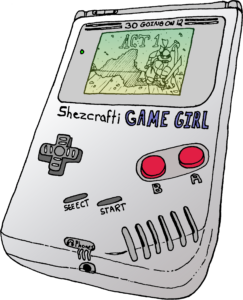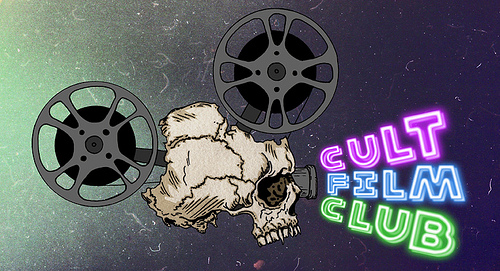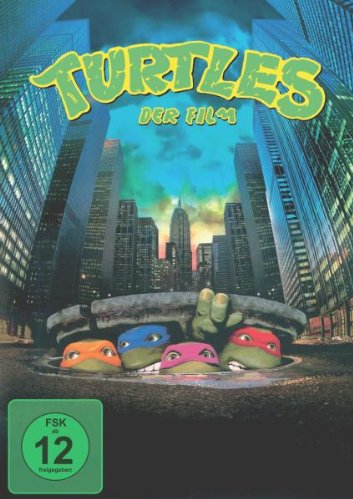
This past weekend my copy of the German edition of Teenage Mutant Ninja Turtles, or Turtles Der Film, as it’s called in Germany, finally arrived in the mail.
I had to order it from Amazon.de using Google Translator every step of the way, and the shipping and handling actually cost more than the DVD itself (14 EUR vs. 12 EUR).
So why did I drop about $35 USD on this thing? Because it’s the most complete version of the first TMNT film. There are 2 deleted scenes, an alternate ending, and the real reason I bought it:
It has a director’s commentary–in English!
Here are 25 of the most interesting things I learned:
#1 – That’s not New York City.
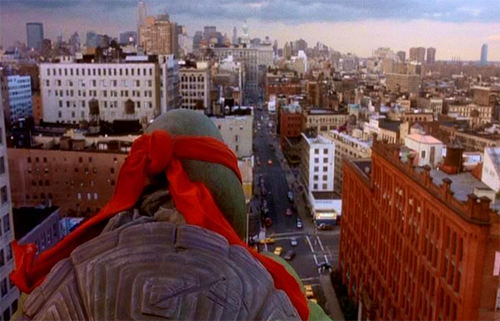
Well, okay, the above picture actually is.
Although TMNT takes place on the streets and rooftops of New York, the film was only shot on location in the city for 4 days–a small percentage of the overall film. Most of the interiors and many of the exteriors are sets that were shot in Wilmington, North Carolina. For instance, April’s news station is a real local news station in Wilmington, and most of the sewer system we see throughout the film is actually an elaborate set.
#2 – The man to thank for giving us “dark and gritty” Turtles.
Director Steve Barron likes the use of darkness and shadows, which he feels “leaves more to the imagination.” However, the Golden Harvest studio execs were worried that the film would be “too dark,” predicting that kids would want the movie to be bright and colorful (a’la Secret of the Ooze). But Steve fought back hard, resulting in the film’s “dark and gritty” aesthetic that most of us fans would agree is just perfect for the Turtles.
#3 – Filming was chaos.
Barron often had to rely on his gut when shooting the film because everything was completely out of sync due to the complicated animatronics, multiple actors per Turtle, and audio that would have to be dubbed in later. “The dailies were a mess,” he says. “You had to suspend your belief and go with your instinct as to how it would all come together.”
#4 – No peeking!
The performers inside the Turtle costumes were only able to see through tiny slits beneath the masks. If you look very closely, you can see the openings–and once in a while you can catch a glimpse of the actors.
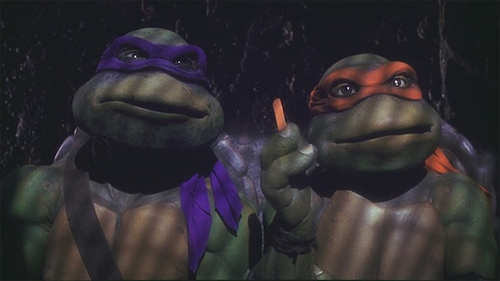
#5 – “Where do they come up with this stuff?”
Remember when Raphael goes to the movies to see Critters? It was a joke (as well as a terrible movie). Barron chose Critters as a snarky in-joke about the Turtles themselves being outlandish creatures.
#6 – “You gotta know what a crumpet is to understand cricket.”
The fight between Raph and Casey Jones in what appears to be Central Park is actually taking place on a hot, humid night in rural North Carolina. There were tons of crickets, which had to be edited out of the sound mix. And now you can have a good laugh when Casey whips out his cricket bat during the same scene.
#7 – “It means you’re afraid of enclosed areas.”
Occasionally Josh Pais, the actor who plays Raphael, would get claustrophobic and the crew would have to rip the head off his costume to free him. And because it was such a delicate process, they weren’t able to do it very quickly. Poor Josh!
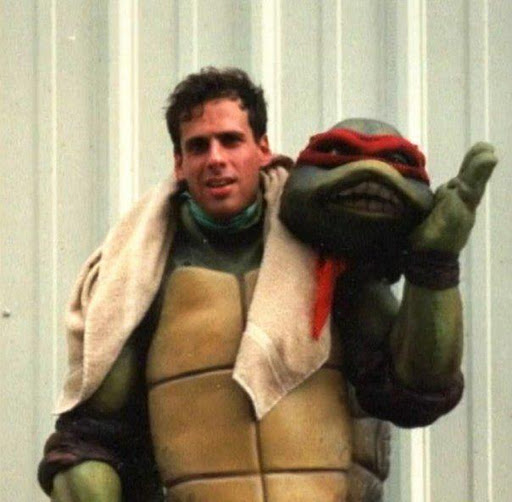
#8 – De plane! De plane!
There was a commercial flight path over the North Carolina farm where much of the film was shot. Sometimes radio signals from the planes flying overhead would interfere with the Turtles’ facial animatronics causing them to break out in unpredictable, involuntary spams.
#9 – They’re ready for their close-up.
During Splinter’s heartfelt talk with Raphael, Barron gets the camera very close to make the scene feel more intimate. The Henson team was nervous that the close-ups would reveal too much of the puppetry and animatronics. It’s a testament to the artistry of the Jim Henson Creature Shop that the scene works as well as it does.
#10 – There’s a good Tortoise & The Hare joke in here somewhere…
Barron often had to use more FPS (faster camera speeds) while filming because the Turtles walked really slow from being weighed down by the heavy costumes and the 60 extra pounds of animatronics that were stored in their shells. It’s especially noticeable in the scene where Raph carries April home after getting jumped in the subway station.
#11 – Who needs diets?
The performers inside the Turtle costumes all lost “at least 20 pounds each” because the suits were so hot. The heat was especially unbearable during the farm scenes, which were shot in the humid southern state of North Carolina.
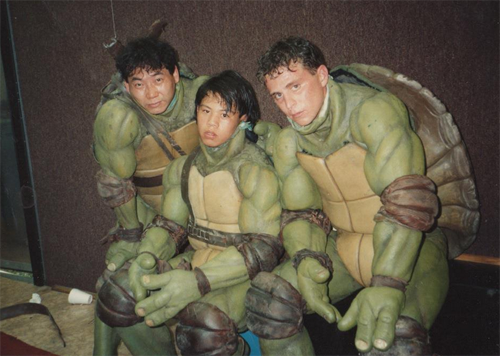
#12 – Maybe they should stop eating so much pizza.
The Turtles were too big to fit through standard-size manhole covers, so the ones you see in the film were all custom built.
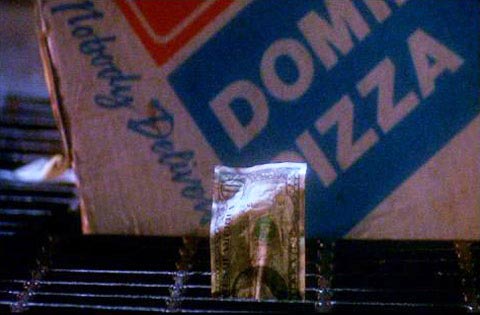
#13 – Every studio that passed on TMNT should kick themselves in the face.
Barron said filming TMNT was very “touch and go”, particularly during the first few months when they were filming without a deal. No American studios wanted anything to do with the property (until New Line eventually came along) which was considered risky. However, the franchise continued to steadily gain in popularity through the cartoons. By the time the first teaser trailer landed, people were going crazy over it.
#14 – Bad horror movies ruin everything.
Teenage Mutant Ninja Turtles earned over $135 million at the box office and was the highest grossing independent film–until The Blair Witch Project surpassed it nine years later.
#15 – There’s no crying in Ninjutsu!
For the scenes were Splinter is crying, Steve Barron kept demanding more water for the puppet’s eyes, to make the emotion more believable. But he had to put up a bit of a fight with the Henson team to get his way, since the water eats away at the costume’s latex.
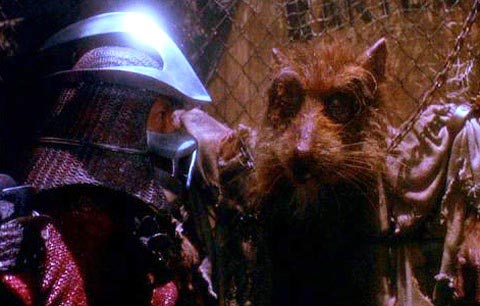
#16 – “I think he’s actually turning red.”
In the scene where Raph throws his sai at Donatello, the crew used an invisible wire to keep the weapon pointed in the right direction and ensure it didn’t endanger any of the actors. If you pause the screen and look really closely, you can see it.
#17 – Good thing they got it right.
When April’s apartment catches fire, the heat from shooting those scenes was so unbearable that the Turtle actors could only stand to do 1 – 2 takes max before quickly having to move on.
#18 – No wonder TMNT is such a great film.
Teenage Mutant Ninja Turtles was editor Sally Menke’s first film ever. She went on to become the award-winning editor and collaborator for Quentin Tarantino’s films–the only editor with whom Tarantino ever worked. In an interview for his Grindhouse film, Tarantino notes, “I write by myself but when it comes to the editing, I write with Sally. It’s the true epitome, I guess, of a collaboration because I don’t remember what was her idea, what was my idea. We’re just right there together.” Sadly, Menke died in 2010.
#19 – Special effects aren’t everything.
Of TMNT’s low budget (which was only $9 million) and other constraints, Barron wistfully notes that “sometimes restrictions are a benefit because it forces you to focus on character.” When it comes to film making, huge budgets and lots of special effects can cause you to “overboil it.”
#20 – Green body parts were frequently sacrificed.
The Henson team frequently had to touch up the texture and coloring of the Turtles’ latex costumes, which constantly deteriorated. For instance, there were over tens sets of arms for each Turtle and total body part replacements were frequent.
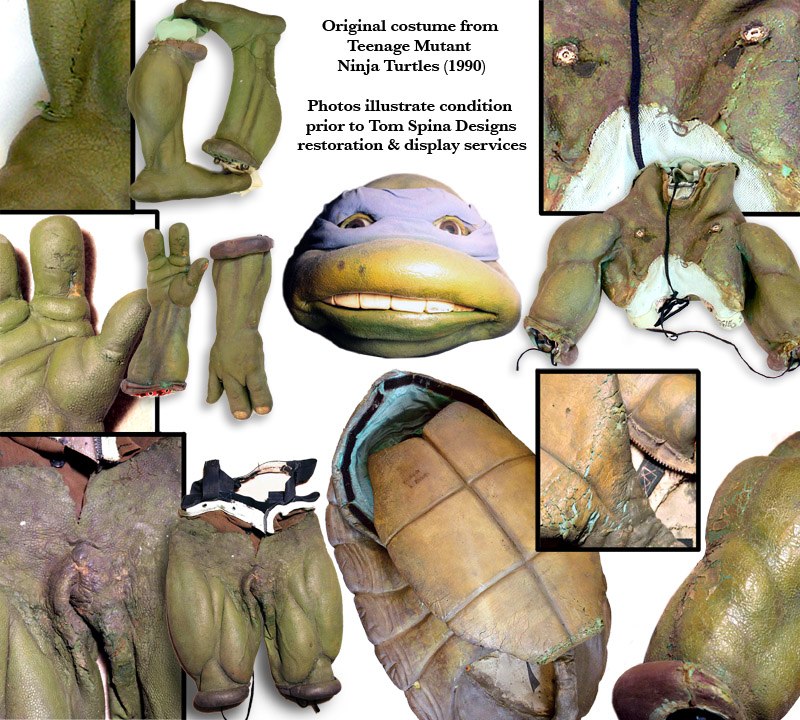
#21 – Steve Barron has good taste in music.
The Sid Vicious t-shirts Danny wears are a nod to Steve’s musical tastes. He wanted the film’s soundtrack to have more of an indie vibe–punk, new wave, The Clash–but the producers wanted something more commercial. I guess that’s why we got MC Hammer instead.
#22 – Hey, that set looks familiar.
You know that huge fight sequence at the end of the film where the action wanders through the streets, scales buildings, and over rooftops? That’s actually taking place on an elaborate New York City set. Guess what movie it was re-purposed from? Big Trouble in Little China.
#23 – Not only does Elias Koteas look like a young Robert DeNiro…
…he also once had a gig writing for The Wonder Years, which is probably why his one-liners and comedic timing as Casey Jones are so great.
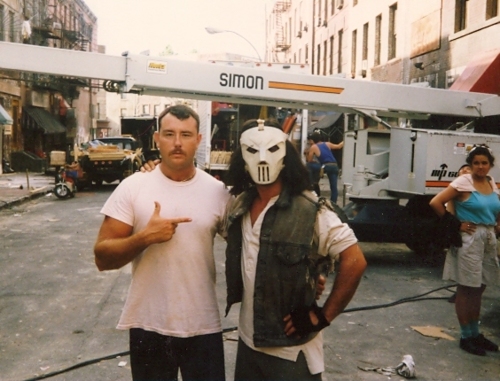
#24 – Suck it, Casper!
Soon after Teenage Mutant Ninja Turtles was released to unprecedented success, Stephen Spielberg asked Steve Barron to come and meet him and offered him the opportunity to direct Casper: The Friendly Ghost. Steve turned it down.
#25 – A ray of hope for Michael Bay’s TMNT Vision?
Here’s something fans who are concerned about producer Michael Bay’s upcoming Ninja Turtles film will appreciate:
If he could do it all over again, Steve Barron said he would use a mix of live-action (e.g. people in Turtle costumes) and CGI to animate their movement and facial expressions–similar to the method used in Where the Wild Things Are and rumored to be the same method for the upcoming TMNT film.
WANTED: Teenage Mutant Ninja Turtles – The Director’s Cut
Is that asking too much?

